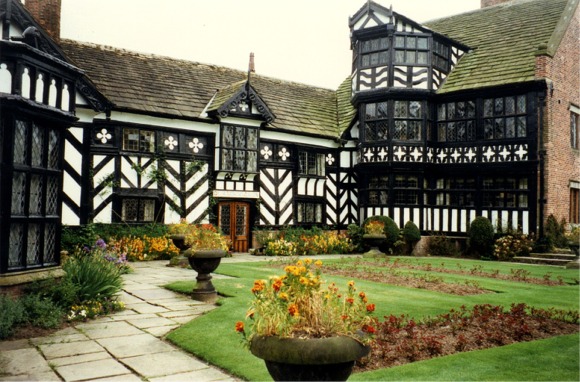Fitton Baronets on:
[Wikipedia]
[Google]
[Amazon]
The Fitton Baronetcy, of George Edward Cokayne ''Complete Baronetage, Volume 1'' 1900
/ref> The Fitton family were settled in Gawsworth from about the 13th century. The first Baronet's ancestors included Sir Edward Fitton (1500–1553),
 *Sir Edward Fitton, 1st Baronet (1572–1619)
*Sir Edward Fitton, 2nd Baronet (1603–1643)
*Sir Edward Fitton, 1st Baronet (1572–1619)
*Sir Edward Fitton, 2nd Baronet (1603–1643)
Gawsworth
Gawsworth is a civil parish and village in the unitary authority of Cheshire East and the ceremonial county of Cheshire, England. The population of the civil parish at the 2011 census was 1,705. It is one of the eight ancient parishes of Macc ...
in the County of Chester
Cheshire ( ) is a ceremonial and historic county in North West England, bordered by Wales to the west, Merseyside and Greater Manchester to the north, Derbyshire to the east, and Staffordshire and Shropshire to the south. Cheshire's county town ...
, was a title in the Baronetage of England. It was created on 2 October 1617 by James I for Edward Fitton, of Gawsworth Hall, Gawsworth, Cheshire./ref> The Fitton family were settled in Gawsworth from about the 13th century. The first Baronet's ancestors included Sir Edward Fitton (1500–1553),
High Sheriff of Cheshire
This is a list of Sheriffs (and after 1 April 1974, High Sheriffs) of Cheshire.
The Sheriff is the oldest secular office under the Crown. Formerly the Sheriff was the principal law enforcement officer in the county but over the centuries most ...
in 1544 and Sir Edward Fitton (1527–1579), Treasurer of Ireland and President of Connaught
The Lord President of Connaught was a military leader with wide-ranging powers, reaching into the civil sphere, in the English government of Connaught in Ireland, in the sixteenth and seventeenth centuries. The office was created in 1569, and in 1 ...
. His father Sir Edward Fitton (1548–1606) was an unsuccessful colonist of Munster. His sister, Mary Fitton
Mary Fitton (or Fytton) (baptised 24 June 1578 – 1647) was an Elizabethan gentlewoman who became a maid of honour to Elizabeth I of England, Queen Elizabeth. She is noted for her scandalous affairs with William Herbert, 3rd Earl of Pembroke, V ...
, was Maid of Honour
A maid of honour is a junior attendant of a queen in royal households. The position was and is junior to the lady-in-waiting. The equivalent title and office has historically been used in most European royal courts.
Role
Traditionally, a queen ...
to Elizabeth I.
The second Baronet, High Sheriff in 1633, was an officer in the service of Charles II and was briefly Governor of Bristol following that city's fall during the English Civil War
The English Civil War (1642–1651) was a series of civil wars and political machinations between Parliamentarians (" Roundheads") and Royalists led by Charles I ("Cavaliers"), mainly over the manner of England's governance and issues of re ...
. The baronetcy became extinct on his death in 1643. He left his estate by his will of 1641 to his Irish cousin William Fitton of Awne (Awrice), County Limerick
"Remember Limerick"
, image_map = Island_of_Ireland_location_map_Limerick.svg
, subdivision_type = Country
, subdivision_name = Republic of Ireland, Ireland
, subdivision_type1 = Provinces of Ireland, Province
, subd ...
, (grandson of Sir Edward Fitton, Treasurer of Ireland) to the exclusion of his seven sisters and their husbands. The will was disputed and lengthy legal proceedings followed involving Alexander Fitton, Lord Chancellor of Ireland (son of William) and Charles Gerard, 1st Baron Gerard, son of Penelope Fitton, eldest daughter of the first Baronet. Settlement of the lawsuit in 1663 passed the estate to Gerard, who was later created Earl of Macclesfield
Earl of Macclesfield is a title that has been created twice. The first creation came in the Peerage of England in 1679 in favour of the soldier and politician Charles Gerard, 1st Baron Gerard. He had already been created Baron Gerard, of Bra ...
.
Fitton baronets, of Gawsworth (1617)
 *Sir Edward Fitton, 1st Baronet (1572–1619)
*Sir Edward Fitton, 2nd Baronet (1603–1643)
*Sir Edward Fitton, 1st Baronet (1572–1619)
*Sir Edward Fitton, 2nd Baronet (1603–1643)
References
{{s-end Extinct baronetcies in the Baronetage of England